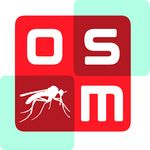OpenSourceMalaria:Triazolopyrazine (TP) Series: Difference between revisions
Matthew Todd (talk | contribs) (→Introduction: Launching info) |
Matthew Todd (talk | contribs) (→Open Source Malaria Series 4: The Triazolopyrazine (TP) Series: reword of relaunch) |
||
| Line 7: | Line 7: | ||
===Preamble=== | ===Preamble=== | ||
This series of | This series is the newest of the OSM series. It was announced on September 10th 2013. | ||
The series arises from industrial work that cannot be fully disclosed which was followed by some hit-to-lead work funded directly by MMV which can. | |||
The series is based on a triazolopyrazine core. There is evidence from parasite ion regulation assays (below) that these compounds may be PfATP4 inhibitors. | |||
===What is Known at the Start of the Campaign=== | ===What is Known at the Start of the Campaign=== | ||
A briefing document written for MMV constitutes what was known at the start of the open project. The contents will gradually become part of this wiki (below) as the project progresses. The | A briefing document written for MMV constitutes what was known at the start of the open project. | ||
The contents will gradually become part of this wiki (below) as the project progresses. | |||
The raw data described in the briefing document will be released when it is obtained. Ion regulation assay data has already been received (below). | |||
===What Can the Community Do Now?=== | |||
Those wishing to contribute to OSM Series 4 should in the first instance read the briefing document. The first question we have is: Which 10 compounds ought to be made in Sept/Oct 2013 for evaluation? | |||
Resources Needed: Chemists to either make new molecules, or help obtain existing compounds that might be relevant to this series. | |||
===Current Aims=== | ===Current Aims=== | ||
1. Hit-to-lead synthesis and biological evalaution. | |||
2. Validation of PfATP4 activity. | |||
Improve potency and drug likeness. | 3. Improve potency and drug likeness. | ||
===Current Questions for the Community=== | ===Current Questions for the Community=== | ||
Starting-point questions are listed at the end of the briefing document. These translate into the initial question of Which compounds ought we to make | Starting-point questions are listed at the end of the briefing document. These translate into the initial question of '''Which compounds ought we to make first?''' Suggestions can be given in [http://opensourcemalaria.org/# multiple ways]. | ||
==Prior Knowledge of the Series== | ==Prior Knowledge of the Series== | ||
| Line 29: | Line 41: | ||
===Potency of Hits and Analogs=== | ===Potency of Hits and Analogs=== | ||
(Detail will be placed here, but for the moment please browse the briefing document) | |||
===Possible PfATP4 Activity Deduced from Parasite Ion Regulation Assays=== | ===Possible PfATP4 Activity Deduced from Parasite Ion Regulation Assays=== | ||
Revision as of 01:29, 10 September 2013
Open Source Malaria Series 4: The Triazolopyrazine (TP) Series
Introduction
Preamble
This series is the newest of the OSM series. It was announced on September 10th 2013.
The series arises from industrial work that cannot be fully disclosed which was followed by some hit-to-lead work funded directly by MMV which can.
The series is based on a triazolopyrazine core. There is evidence from parasite ion regulation assays (below) that these compounds may be PfATP4 inhibitors.
What is Known at the Start of the Campaign
A briefing document written for MMV constitutes what was known at the start of the open project.
The contents will gradually become part of this wiki (below) as the project progresses.
The raw data described in the briefing document will be released when it is obtained. Ion regulation assay data has already been received (below).
What Can the Community Do Now?
Those wishing to contribute to OSM Series 4 should in the first instance read the briefing document. The first question we have is: Which 10 compounds ought to be made in Sept/Oct 2013 for evaluation?
Resources Needed: Chemists to either make new molecules, or help obtain existing compounds that might be relevant to this series.
Current Aims
1. Hit-to-lead synthesis and biological evalaution. 2. Validation of PfATP4 activity. 3. Improve potency and drug likeness.
Current Questions for the Community
Starting-point questions are listed at the end of the briefing document. These translate into the initial question of Which compounds ought we to make first? Suggestions can be given in multiple ways.
Prior Knowledge of the Series
Potency of Hits and Analogs
(Detail will be placed here, but for the moment please browse the briefing document)
Possible PfATP4 Activity Deduced from Parasite Ion Regulation Assays
The following five compounds were evaluated in parasite ion regulation assays in the Kirk Laboratory; the hypothesis is that PfATP4 is a Na+ ATPase that exports Na+ and imports H+ (or equivalent) and that the effects of the compounds on Na+ concentration and pH are attributable to inhibition of this activity. Structures, potency, metabolism/solubility and raw PfATP4 assay data are here.

MMV669000: no (potency: inactive)
MMV669304: yes (potency: 280 nM)
MMV669360: yes (potency: 356 nM)
MMV669542: yes (potency: 185 nM)
MMV669848: yes (potency: 114 nM)
MMV669000 did not dissipate the plasma membrane Na+ gradient or increase the plasma membrane pH gradient consistent with it not inhibiting PfATP4 at the concentration tested.
The other compounds dissipated the plasma membrane Na+ gradient and increased the plasma membrane pH gradient at a concentration of 2 μM, consistent with them being PfATP4 inhibitors.
(i.e. note the correlation: compound inactive in these assays is the inactive analog in the plasmodium screen)
Strings
MMV669000: O=C(N1CC(C=CC=C2)=C2C1)C3=CN=CC4=NN=C(C5=CC=C(OC(F)F)C=C5)N43; InChI=1S/C21H15F2N5O2/c22-21(23)30-16-7-5-13(6-8-16)19-26-25-18-10-24-9-17(28(18)19)20(29)27-11-14-3-1-2-4-15(14)12-27/h1-10,21H,11-12H2
MMV669304: FC(F)OC(C=C1)=CC=C1C2=NN=C3C=NC=C(CCCC4=CC=CC=C4)N32; InChI=1S/C21H18F2N4O/c22-21(23)28-18-11-9-16(10-12-18)20-26-25-19-14-24-13-17(27(19)20)8-4-7-15-5-2-1-3-6-15/h1-3,5-6,9-14,21H,4,7-8H2
MMV669360: FC(F)OC(C=C1)=CC=C1C2=NN=C3C=NC=C(COCC4=CC=C(F)C(F)=C4)N32; InChI=1S/C20H14F4N4O2/c21-16-6-1-12(7-17(16)22)10-29-11-14-8-25-9-18-26-27-19(28(14)18)13-2-4-15(5-3-13)30-20(23)24/h1-9,20H,10-11H2
MMV669542: FC(F)OC(C=C1)=CC=C1C2=NN=C3C=NC=C(C(NC4=CC=CC(Cl)=C4)=O)N32; InChI=1S/C19H12ClF2N5O2/c20-12-2-1-3-13(8-12)24-18(28)15-9-23-10-16-25-26-17(27(15)16)11-4-6-14(7-5-11)29-19(21)22/h1-10,19H,(H,24,28)
MMV669848: FC(F)OC(C=C1)=CC=C1C2=NN=C3C=NC=C(CN4CC(C=CC=C5)=C5C4)N32; InChI=1S/C21H17F2N5O/c22-21(23)29-18-7-5-14(6-8-18)20-26-25-19-10-24-9-17(28(19)20)13-27-11-15-3-1-2-4-16(15)12-27/h1-10,21H,11-13H2
